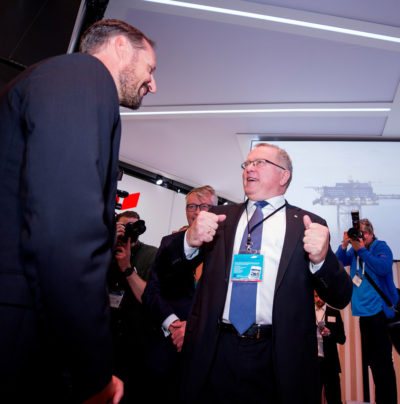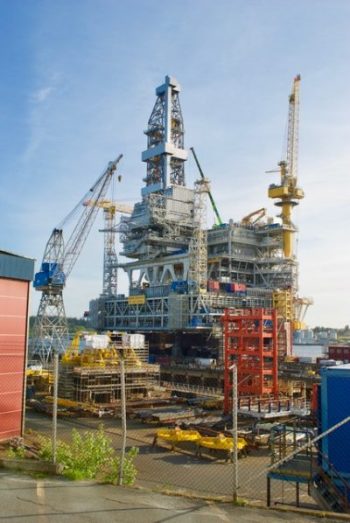Thousands of oil industry players from all over the world are in Stavanger this week for the latest Offshore Northern Seas (ONS) exposition, and the mood could hardly be better. It was only fitting that the price of a barrel of North Sea crude jumped back up to USD 76 this week, adding to optimism and grand plans to also “go green.”

“The mood has completely turned around” since the last ONS in 2015, claimed Tom Gederø of the relatively small oil company Spirit Energy Norge. He told newspaper Aftenposten while setting up for ONS that “we suddenly have lots of projects underway and there’s a whole new energy.”
Some of that energy is now also directed at the renewables sector, as oil companies scramble to take on a greener profile. They include Norway’s biggest company, Equinor, which changed its name from Statoil since the last ONS to help shed its state oil company image. It was announcing major new wind energy projects on Tuesday, to help power offshore oil installations, while also crowing about how its huge Johan Sverdrup oil field will be even more productive at lower costs.
Equinor also has launched into another exploration phase, which can always be lucrative for all the oil service and supply companies in the offshore sector. Crown Prince Haakon, who officially opened ONS on Monday, reminded oil industry executives, also at the former Statoil, that “a green energy future” is a long-term goal and involves a lengthy transition. He urged oil industry players to renew themselves: “The threat of global warming affects all industries, and perhaps especially the energy sector.” He said that while there’s renewed optimism in the oil and gas sector, the challenges are “complicated” because of the need to deliver energy while also protecting the planet.

Equinor’s Sverdrup field, meanwhile, is now expected to generate more than NOK 900 billion (USD 112 billion) in revenues to the state over its lifetime. Its development already has boosted the supply sector in a difficult period, with Oil Minister Terje Søviknes noting that Sverdrup will generate as many as 150,000 jobs over the next seven years.
Equinor CEO Eldar Sætre said his company wants to be part of the transition to a much more diverse energy mix. “The most important thing we can do for the climate, in the short term, is to produce oil and gas that the world needs with the lowest possible CO2 and methane footprints,” Sætre said in his opening remarks. “I have faith that the industrial adventure will continue, but it will demand the best from all of us.”
ONS is held every other year and spirits are high this week. “The Norwegian oil industry isn’t just healthy again, it’s nearly a bonanza for the oil companies,” oil analyst Jarand Rystad of Rystad Energy in Oslo told Aftenposten. “The turning point came this year, in 2018. We saw the signals of improvements last year, but this is the first year that the oil price has risen considerably and now it’s harvest time.”
Karl Eirik Schjøtt-Pedersen, who heads the industry association Norske olje og gass, is a bit more cautious. He agreed that the industry is healthy again but noted how it’s been through demanding times when many people lost their jobs. That changed this summer, he told Aftenposten, when employment finally increased overall. Schjøtt-Pedersen still sees a need for cost-cutting, however, and young oil geologists who graduated from university this year aren’t all finding jobs.
Not all jobs coming back
“In my class, we were 45 students,” Monika Maria Dyrendahl, age 24, told newspaper Dagens Næringsliv (DN) on Tuesday. “Most have found full-time jobs, but not within oil and gas. Many have gone to the consulting and information technology branches. Others are becoming teachers.”
Dyrendahl started a five-year civil engineering major at the Norwegian University of Science and Technology (NTNU) in Trondheim in 2013 and prospects were bright back then. When oil prices fell in 2014, so did employer interest, with newspaper Upstream reporting that around 40 percent of jobs within oil exploration have disappeared.
“I chose geology because I like it,” Dyrendahl told DN, but she hasn’t had an offer after sending out nearly 50 job applications. Equinor and Aker BP claim they will need thousands more workers over the next 10 years. In the meantime, Dyrendahl has registered to study data technology at NTNU until the promises of jobs become reality.
newsinenglish.no/Nina Berglund

